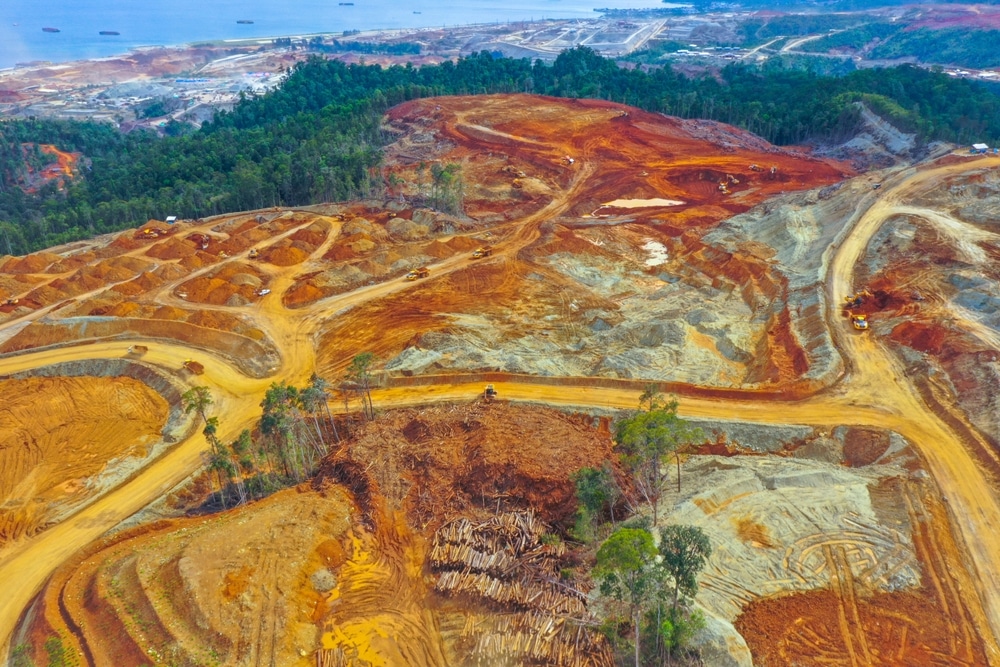The second quarter of 2024 brought contrasting trends to the nickel industry. While primary nickel producers increased output year-over-year, mined nickel production faced a decline, reflecting the broader impact of global oversupply. These dynamics continue to reshape the nickel market, affecting producers across the globe.
Primary Nickel Takes the Lead
Primary nickel, which includes materials like ferronickel for steelmaking and intermediate products for EV batteries, saw substantial growth in Q2 2024. Per S&P Global Commodity Insights, the top five publicly listed producers achieved a combined output of 158,937 metric tons. That’s a notable 35% increase compared to the same quarter in 2023.
This surge was driven by the growing demand for refined products, particularly in electric vehicle batteries and stainless steel production.
The London Metal Exchange (LME) cash price for nickel plunged to its lowest level of the year in July, dipping to $15,502.60 per metric ton on July 25. Although prices rebounded slightly to $16,383.96/t by September 3, this figure remains 49.9% below the high of $30,958/t recorded in January 2023.
The steep decline has put pressure on many producers, particularly those operating at higher costs.
Indonesia’s Role in Nickel Oversupply
Despite the global oversupply and price downturn, Indonesia has maintained a strong presence in primary nickel production. The country has contributed significantly to the market surplus, although regulatory delays and restrictions on mining quotas have somewhat tempered their output.
However, Indonesian producers remain resilient, continuing operations even as global prices struggle to recover.
The key player in the nickel market is striving to minimize Chinese involvement in its new nickel ventures. The country aims to meet the requirements for tax credits under the U.S. Inflation Reduction Act of 2022.
Indonesia’s rapidly expanding nickel industry has led to an oversupply, causing prices to drop significantly. This surplus has driven nickel prices down as supply exceeds demand, impacting the overall market dynamics.
Analysts noted that the nickel market is likely to remain in oversupply until at least 2028, with price pressures persisting over the medium term.
How Major Nickel Companies Weather the Storm
Companies like Nickel Industries Ltd. managed to increase production despite unfavorable conditions. Bad weather and regulatory hurdles slowed output, but Nickel Industries demonstrated resilience, capitalizing on better operational efficiencies.
However, not all primary nickel producers enjoyed growth in Q2 2024. Glencore PLC, the Swiss-based diversified miner, recorded a drop in production. This decline stems from challenges at their Koniambo joint venture in New Caledonia, which was under care and maintenance due to severe cost overruns.
Canada-based Lundin Mining Corporation also experienced a sharp downturn. The company’s mined nickel production significantly fell in Q2, producing only 1,721 metric tons. Lundin attributed this drop to an underground collapse at its Eagle site in Michigan, which severely limited output.
Consequently, the company revised its 2024 nickel production guidance down to 7,000-9,000 metric tons, significantly lower than the earlier estimate of 10,000-13,000 metric tons.
Not all miners faced setbacks, though. Sweden’s Boliden AB achieved a production increase of 865 metric tons in Q2, pushing its total output to 2,980 metric tons. This uptick was driven by improved ore grades and recovery rates at Boliden’s Kevitsa mine in Finland, helping the company capitalize on operational efficiencies despite the overall market downturn.
A Challenging, Yet Progressing Road Ahead
The nickel market faces continued challenges, with oversupply and price fluctuations expected to persist. Although some primary nickel producers are managing to expand operations, mined nickel output is under strain. The price slump has affected profitability across the board, with companies wary of reducing production for fear of losing market share.
In another research and projection, the nickel market size could almost double by 2034, reaching around $84 billion. Of this, the market analysis projected that North America would see the fastest market growth between 2024 and 2033.
The global push for electric vehicles is a key driver of the nickel market, as the metal is essential for lithium-ion batteries. Nickel demand also surges from stainless steel manufacturing, fueled by the growth of the construction and infrastructure sectors.
Additionally, its widespread use in industries like aerospace, electronics, and chemical processing further boosts demand. Nickel’s crucial role in renewable energy, particularly in energy storage, adds to its rising importance.
As the market adjusts to these pressures, the outlook remains uncertain. Indonesia’s dominance, regulatory delays, and global demand fluctuations will continue to shape the trajectory of both primary and mined nickel sectors in the years ahead.



